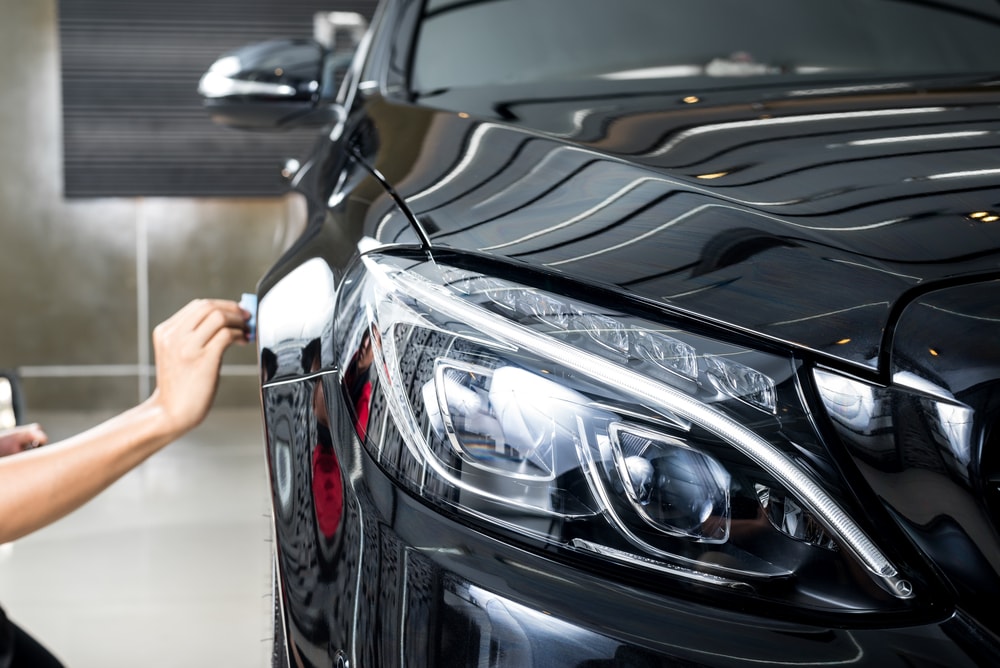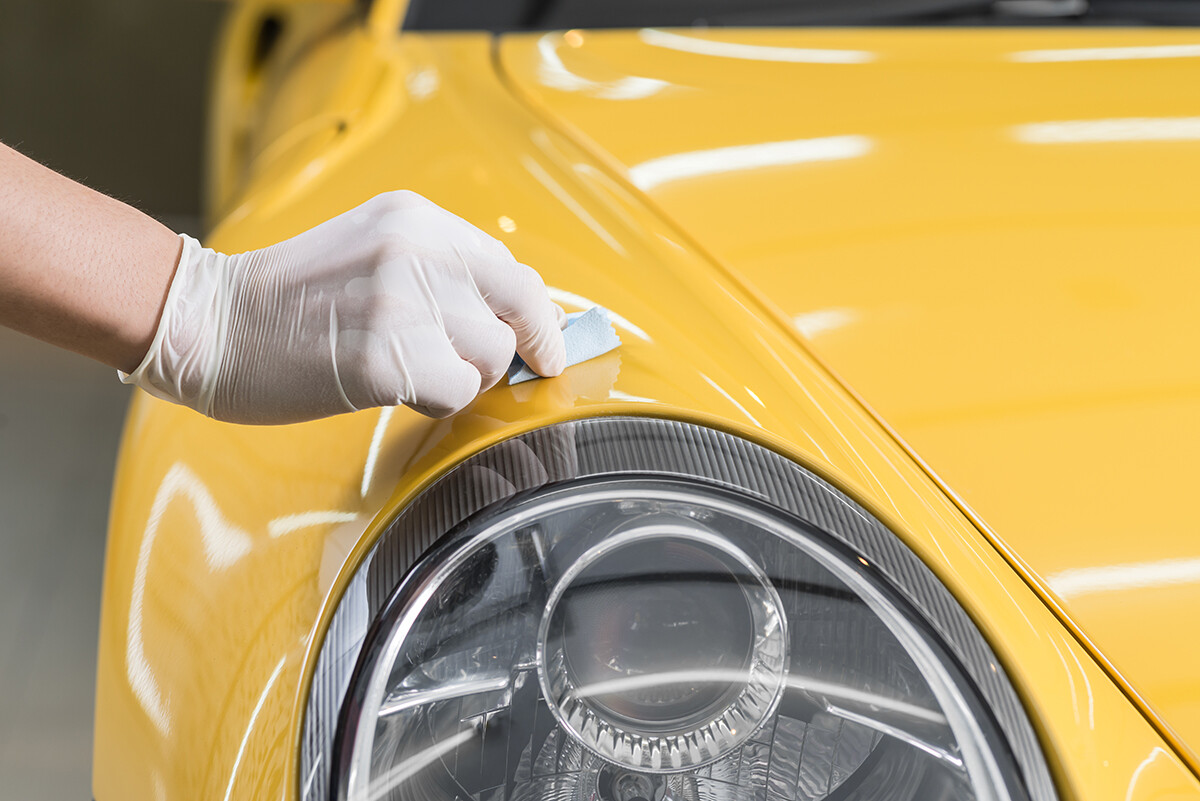Introducing the Science Behind Ceramic Coatings: Just How Does It Work and Why Is It Superior to Typical Options?
Ceramic finishings have actually been obtaining popularity in various industries for their exceptional performance and resilience. Understanding just how ceramic finishes job and why they exceed conventional options is essential for those seeking to boost the long life and durability of their materials.
The Chemistry of Ceramic Coatings
In recognizing ceramic finishes, delving right into the detailed chemistry behind their structure is important for grasping their performance and sturdiness. Ceramic coverings are primarily made up of silicon dioxide (SiO2), which forms a safety and solid layer when put on various surface areas. This chemical structure supplies outstanding resistance to warm, chemicals, and corrosion, making ceramic layers extremely demanded for a wide variety of applications.
The chemistry behind ceramic finishes involves the development of covalent bonds between silicon and oxygen atoms, producing an inflexible network that improves the covering's sturdiness and sturdiness. Additionally, the existence of various other aspects such as light weight aluminum, zirconium, and titanium further improves the coating's properties, using increased solidity and adhesion to surface areas.
Understanding the chemical structure of ceramic coverings permits the personalization of solutions to match specific needs, whether it be for automobile, industrial, or property purposes. By utilizing the power of chemistry, ceramic finishes proceed to pave the method for remarkable defense and efficiency in various industries.
Benefits of Ceramic Coatings

As an outcome, ceramic coatings make cleaning and keeping surface areas much simpler and much less lengthy. In general, the plethora of benefits used by ceramic finishings make them a premium option compared to conventional finish methods.
Exactly How Ceramic Coatings Bond
Ceramic finishes bond to surface areas via a procedure that entails molecular attachment and chemical communications. When a ceramic layer is applied to a surface, it forms a strong bond by chemically adhering to the surface at a molecular level.
Additionally, the chemical communications in between the ceramic layer and the surface area additionally improve the bond. ceramic coatings san jose. These interactions allow the ceramic finishing to produce a continual and smooth layer on the surface area, offering outstanding defense and longevity. Unlike traditional coverings that may rest on the surface without fully bonding, ceramic layers develop a long-term bond that is resistant to chemicals, UV rays, and rough environmental conditions

In significance, the bonding system of ceramic coverings makes certain a durable and efficient safety layer that outshines standard covering alternatives. This remarkable bond adds to the sturdiness, scrape resistance, and durability of ceramic coatings, making them a recommended choice for numerous applications.
Longevity of Ceramic Coatings
The remarkable longevity of ceramic finishes stems from their robust molecular attachment and chemical interactions with surface areas, making sure a sturdy protective layer that exceeds traditional finishing choices. As soon as applied, ceramic finishings create a strong bond with the substratum, developing a resilient obstacle versus numerous environmental stress factors such as UV radiation, chemicals, and abrasions. This bond is so protected that it can stand up to the roughness of daily usage without weakening or breaking down quickly.
Unlike standard coatings that may break down in time, look at this now ceramic layers maintain their integrity for a prolonged period, supplying resilient protection for the underlying surface. The strong molecular structure of ceramic finishes stands Source up to damaging, fading, and peeling, ensuring that the surface remains protected and visually pleasing for many years ahead. This toughness not only reduces the demand for constant reapplications yet also saves money and time in the long run. In general, the outstanding longevity of ceramic coatings makes them an exceptional choice for protecting a large range of surface areas in numerous applications.
Ceramic Coatings Vs. Standard Choices
In contrast to conventional layer techniques, ceramic finishes offer a distinctive blend of sturdiness and safety abilities that establish them apart in different surface security applications. Standard alternatives such as wax or sealers give a short-lived layer of defense that can put on off promptly, calling for constant reapplication. On the other hand, ceramic coverings form a solid bond with the surface, producing a permanent or semi-permanent obstacle that is very immune to abrasion, chemicals, UV rays, and extreme temperatures.
Moreover, ceramic coatings offer superior hydrophobic residential properties compared to conventional coverings. The hydrophobic nature of ceramic coverings triggers water to bead up and roll off the surface area, bring dirt and impurities with it. This self-cleaning result assists to preserve the surface's sanitation and gloss for prolonged periods, lowering the requirement for regular maintenance.
Additionally, ceramic coverings have a thicker layer compared to typical choices, supplying improved scratch resistance and defense against small impacts. This durability makes certain durable performance and aids protect the visual charm of see here the dealt with surface for an extended period.
Conclusion
Finally, the science behind ceramic layers lies in their chemical make-up and bonding properties, making them above traditional choices. The advantages of ceramic finishes consist of enhanced durability and security for surface areas. By understanding exactly how ceramic layers job and their benefits over conventional alternatives, one can make informed decisions when thinking about coating alternatives for numerous applications.
Unlike conventional layers that may sit on the surface area without fully bonding, ceramic finishes develop a permanent bond that is resistant to chemicals, UV rays, and extreme ecological problems.
The outstanding long life of ceramic coverings stems from their robust molecular bond and chemical communications with surfaces, making certain a long lasting protective layer that surpasses conventional covering choices.Unlike standard finishes that might weaken over time, ceramic coatings maintain their honesty for an extended period, providing lasting protection for the underlying surface.In comparison to traditional layer approaches, ceramic layers supply a distinct mix of durability and protective capabilities that set them apart in various surface area defense applications. By comprehending how ceramic layers job and their benefits over typical choices, one can make educated decisions when thinking about finish choices for different applications.
Comments on “Specialist Ceramic Coatings San Jose for Superior Gloss and Longevity”